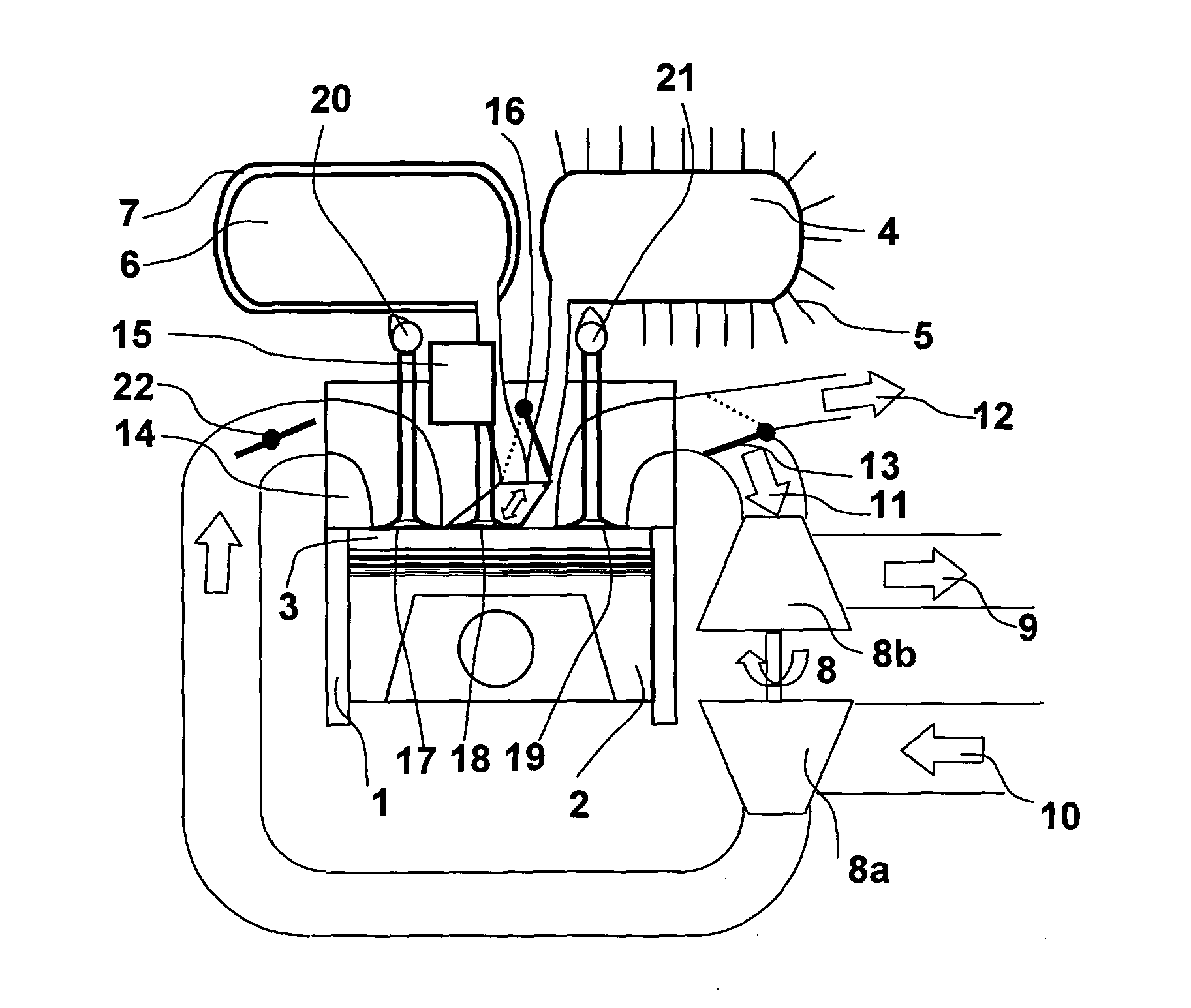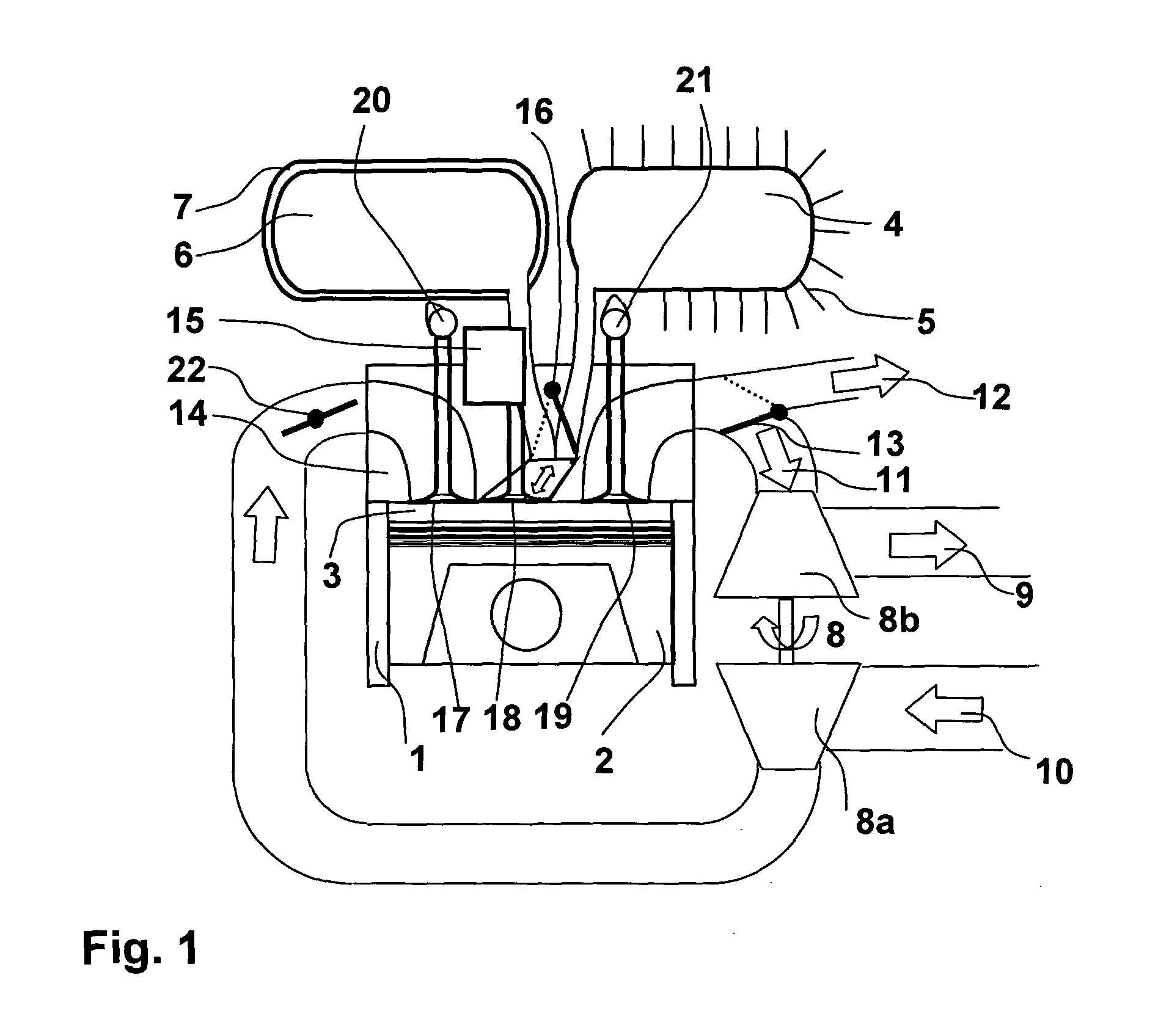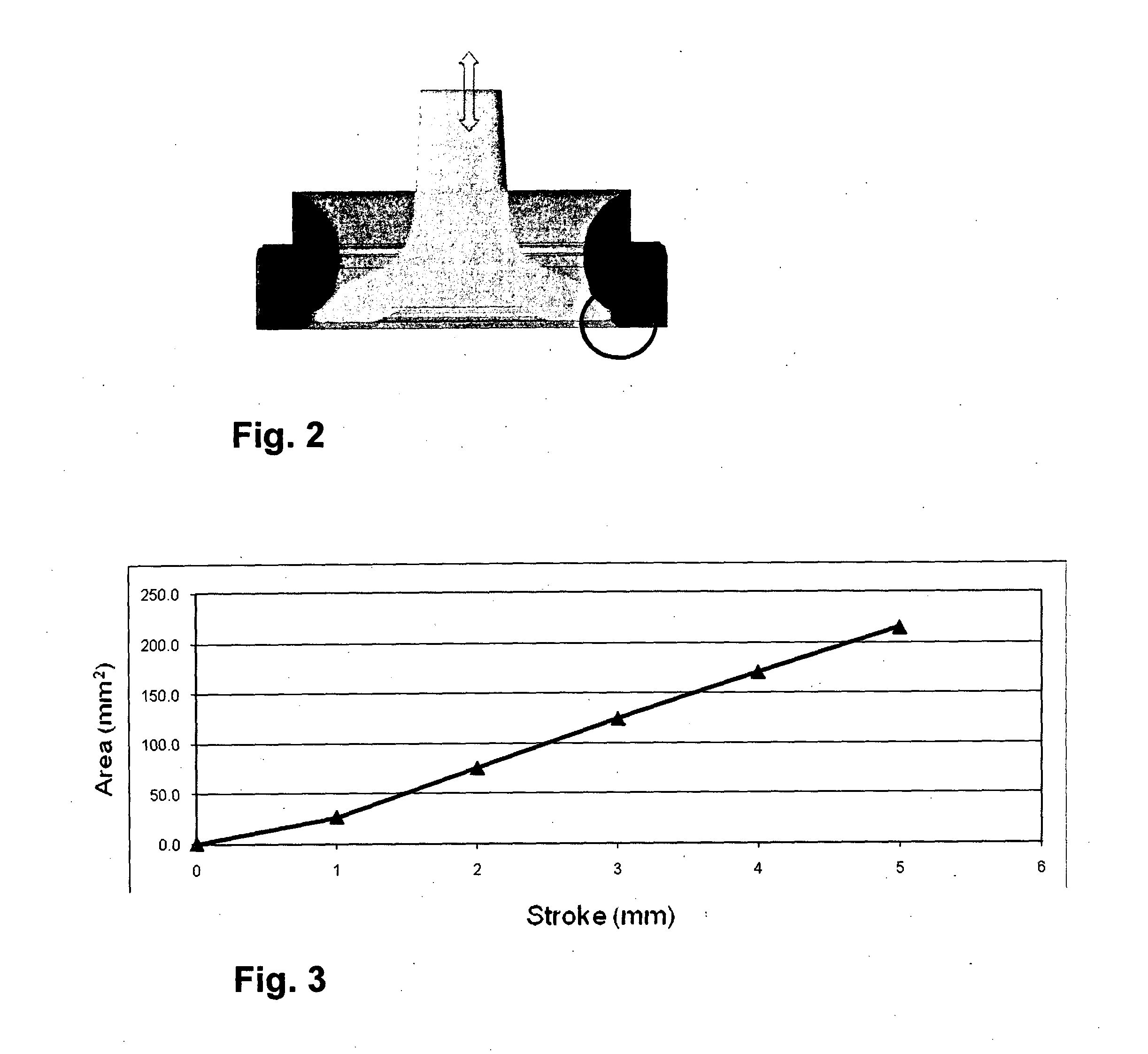Pneumatic hybrid internal combustion engine on the basis of fixed camshafts
a technology of fixed camshafts and internal combustion engines, which is applied in the direction of machines/engines, output power, non-mechanical valves, etc., can solve the problems of engine failure, complex solution, and inability to meet the needs of the customer, and achieve simple and yet efficient setup
- Summary
- Abstract
- Description
- Claims
- Application Information
AI Technical Summary
Benefits of technology
Problems solved by technology
Method used
Image
Examples
Embodiment Construction
[0058]FIG. 1 schematically shows a configuration of a combustion engine according to the present invention. An engine block (cylinder) 1, a cylinder head 14 and a piston 2 are encompassing a combustion chamber 3 with a variable volume. Ambient air 10 is aspired from the environment and compressed by a compressor 8a of a turbocharger 8. In the shown embodiment the air flow is controlled by a throttle 22 arranged in the intake area of the engine and admitted into the combustion chamber 3 via an inlet valve 17, which is mechanically actuated by a camshaft 20. The camshaft 20 is mechanically interconnected and driven by an engine crankshaft (not shown in detail). A charge valve 18 which interconnects a first and a second pressure tank 4, 6 with the combustion chamber is actuated by a charge valve actuator 15 in fully variable manner. This means, that while the inlet and exhaust valves 17, 19 are mechanically interconnected to the crankshaft, the charge valve can be operated completely i...
PUM
 Login to View More
Login to View More Abstract
Description
Claims
Application Information
 Login to View More
Login to View More - R&D
- Intellectual Property
- Life Sciences
- Materials
- Tech Scout
- Unparalleled Data Quality
- Higher Quality Content
- 60% Fewer Hallucinations
Browse by: Latest US Patents, China's latest patents, Technical Efficacy Thesaurus, Application Domain, Technology Topic, Popular Technical Reports.
© 2025 PatSnap. All rights reserved.Legal|Privacy policy|Modern Slavery Act Transparency Statement|Sitemap|About US| Contact US: help@patsnap.com



